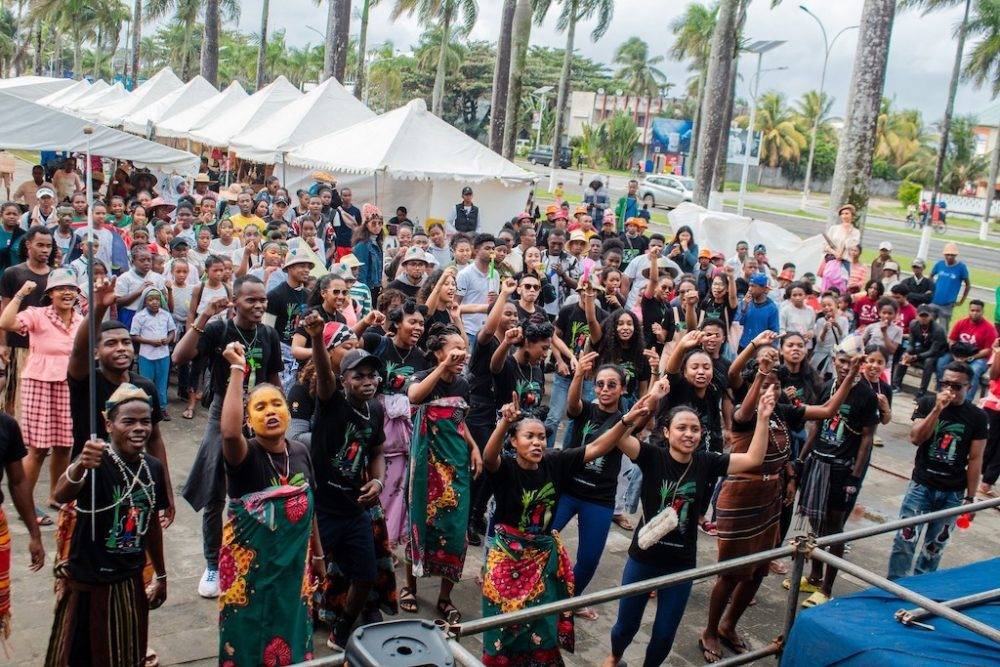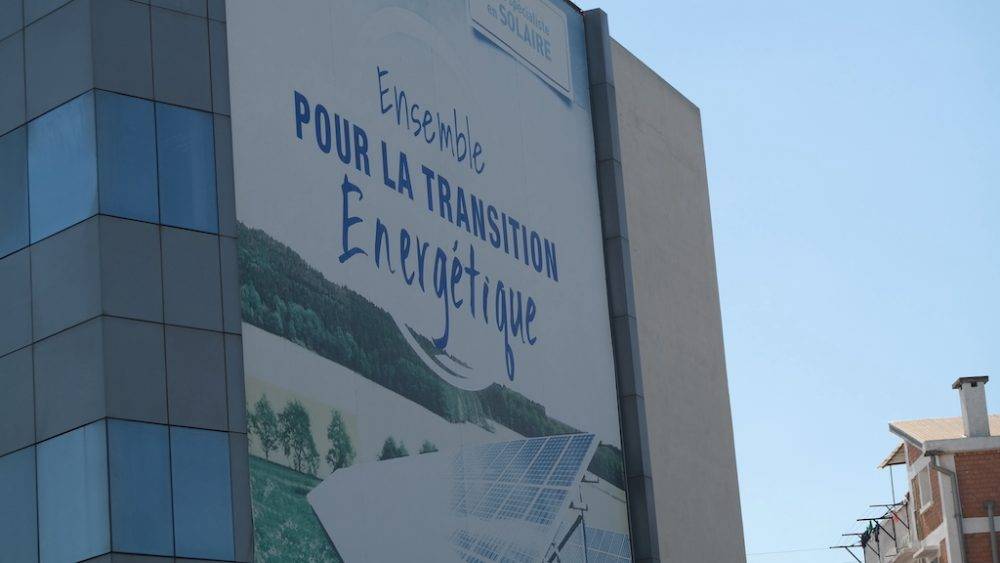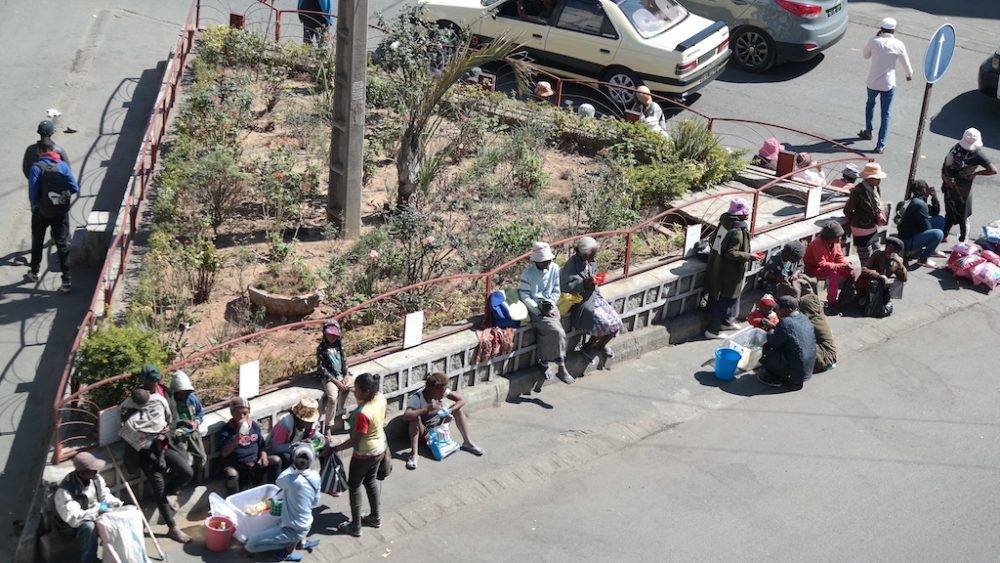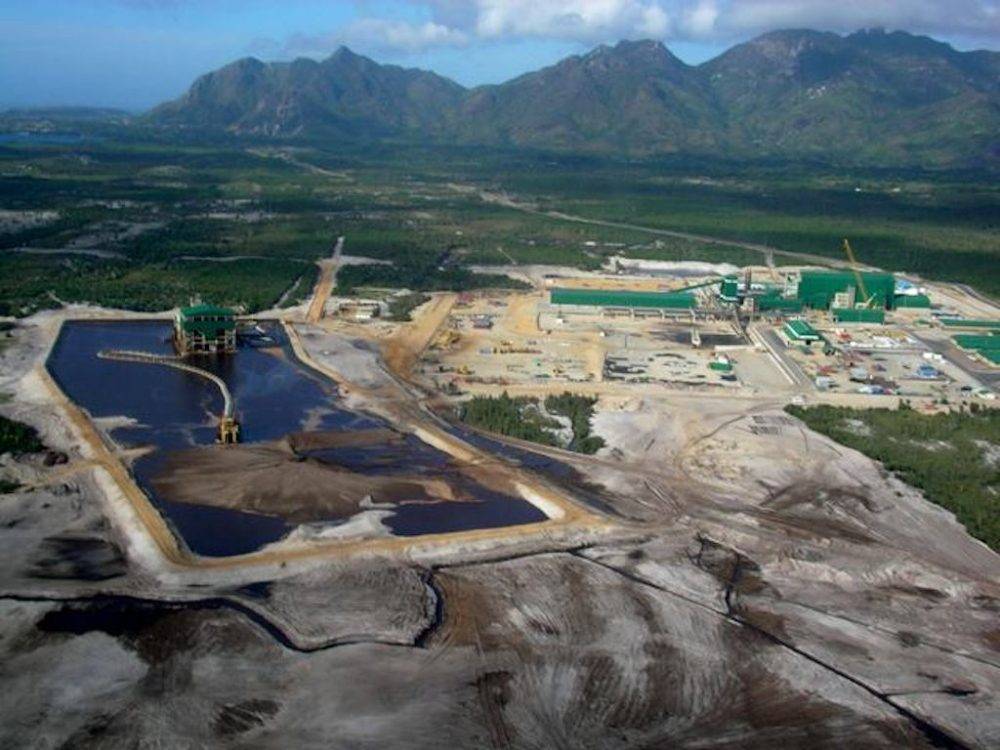On the move: Taxi motorcycles in Ambohitimana, a neighbourhood in the capital city Antananarivo. Photo: Oscar Nkala
A good business day for taxi motorcyclist Itamara Rakotoriamanana is when he makes at least 15 passenger runs of 5 000 Malagasy ariary (about R20) each from central Antananarivo to any destination within 40km of the city centre.
It is an exhausting routine that often gets messy depending on the mood of the passengers. But their moods no longer worry him because business has been good since he replaced his old petrol-powered rickshaw with the “Silent Predator”, an electric battery model that has changed his fortunes.
He named his new motorcycle the Silent Predator because the battery-powered engine makes no noise and releases no exhaust fumes as it moves through the narrow streets of Antananarivo, capital city of the island country off the south-eastern coast of Africa.
It is proof that the transition from fossil fuel-powered vehicles to more climate-friendly options is already happening on the roads of Madagascar. Ratokoriamanana said he was unaware of the bigger role his new taxi plays in the global energy transition to reduce carbon emissions but is thankful that the change has boosted his daily earnings.
“With the old machine, I used up to 20 000 ariary to buy fuel, which was half of my earnings. It was a huge drain because I was feeding the family and fuelling the motorbike from the same pocket. I make more now because I have no more fuel costs,” Rakotoriamanana said.
However, the benefits of the energy transition are yet to be felt beyond Antananarivo. The global switch to low-carbon energy is mineral intensive, and Madagascar has huge deposits of more than 20 rare earth elements, as well as various minerals in demand for the transition.
Most of its big mines are located deep in the rural areas, where communities are witnessing a flood of investors seeking long-term mining concessions and licences but are mostly in the dark about development plans. This silence has created social problems as locals, struggling with land dispossession, loss of livelihoods and environmental impacts, rise to resist the expansion of mining projects.
 Mineral sands: Local communities protest against the Base Toliara project in April 2024. Photo courtesy Global Atlas of Environmental Justice
Mineral sands: Local communities protest against the Base Toliara project in April 2024. Photo courtesy Global Atlas of Environmental Justice
Toliara Sands
One of mining projects that has riled indigenous people and environmental defenders alike is the Base Toliara mineral sands mine in south-west Madagascar, which will extract high-grade ilmenite, zircon and monazite. Mineral sands are increasingly being used in energy transition infrastructure.
Australian company Base Resources owned the mine until its complete acquisition by US-based uranium miner Energy Fuels in April 2024. In a notice to shareholders in July, Base Resources said the mine would re-open shortly after being awarded a mining licence and environmental certificates.
The mine has been in limbo since 2018 due to local opposition and community protests over its environmental and social impacts. Residents of Toliara have recently joined the indigenous land rights organisation Collectif Pour la Defense des Terres Malgaches (Collective for the Defence of Malagasy Lands) to oppose the imminent launch of the mineral sands project.
In a statement released on 20 July, the collective accused the government of rushing to start mining while keeping local communities ignorant about the increased risks and dangers they will face.
The organisation said the project-affected people must be informed that the original mining plan has been expanded to include rare earth minerals and to produce uranium on site throughout the lifespan of the mine.
“The acquisition of Base Resources by Energy Fuels radically transforms the activities at Base Toliara. In addition to the extraction of ilmenite, zircon and rutile, as per the previous plan, rare earths and significant quantities of uranium will be produced at low cost,” the collective said in a statement issued on 29 July.
“The Malagasy government should be aware of the serious risks to the health of local communities from the exploitation of monazite, which is known for its high radioactivity.
“Not to mention the harmful public health effects of zircon, which have been the subject of several warnings from scientists and organisations. This increase in risks must not remain unknown to the population, and it is up to the government to inform them of it quickly,” it said.
Paper trail
Energy Fuels had not responded to requests for details regarding the types of metals and industrial activities planned for Base Toliara at the time of publication. However, a review of paper trail evidence suggests that the company is under pressure to start mining operations in Madagascar because its existing mineral base sands mine in Kwale County, Kenya, is closing down after exhausting the mineral reserve.
A statement issued by Base Resources to shareholders in July recorded that Madagascar’s government had agreed to expand the business plan at Base Toliara from the extraction of zircon, ilmenite, monazite and rutile to include industrial production of uranium on site following its acquisition by Energy Fuels.
“In-principle agreement on key fiscal terms that will apply to the whole Toliara Project (ie both minerals sands and monazite) are considered to have been reached with the government of Madagascar, although these remain subject to entry of binding documentation. Engagement with the government is now focused on finalising the binding [memorandum of understanding] that will give effect to the in-principle agreement and other key matters to facilitate timely project progression,” read the statement.
Base Resources said following the acquisition by Energy Fuels on 22 April, “significant progress was made towards satisfying the conditions precedent and the implementation of the company’s proposed combination with Energy Fuels to create a global leader in the critical minerals sector with a focus on rare earth elements, heavy mineral sand and uranium production”.
“The remaining regulatory approval conditions precedent to implementation of the proposed combination are applications to Australia’s Foreign Investment Review Board and the Malagasy Competition Council, each of which remain under review by the relevant regulatory body.”
 Transition trend: Businesses in Madagascar are positioning themselves to cash in on the energy transition. Photo: Oscar Nkala
Transition trend: Businesses in Madagascar are positioning themselves to cash in on the energy transition. Photo: Oscar Nkala
Mining code
Secretary general of the Madagascan Ministry of Mines and Strategic Resources, Henri Razananiriana, said in response to questions that the country has adopted a new code making it mandatory for mining companies to respect human rights in their operations.
“Our failure to consider the human rights dimension in crafting mining laws has created serious problems in the extractives sector,” he said.
The government is working to address all problems relating to resettlement and compensation of local communities, as well as addressing issues of mining impacts and benefits-sharing with local communities, Razananiriana added.
To address issues of benefit-sharing between investors and locals, Razananiriana said Madagascar had recently adopted a national strategy for corporate social responsibility. It would be submitted for implementation after inputs from civil society organisations.
“The strategy aims to establish corporate social responsibility as a competitiveness tool by promoting the contribution of companies to the preservation of natural resources while creating added value for local communities and the country,” he said.
 Social responsibility: Cups and bowls at hand, the high number of beggars in the capital city speaks to the deep-seated poverty citizens expect energy transition mining to address. Photo: Oscar Nkala
Social responsibility: Cups and bowls at hand, the high number of beggars in the capital city speaks to the deep-seated poverty citizens expect energy transition mining to address. Photo: Oscar Nkala
String of controversies
These issues have forced some mining-affected communities to seek redress in the British high court because it has jurisdiction over matters concerning British companies operating around the world.
At Taolagnaro in south-eastern Madagascar, a subsidiary of British mining conglomerate Rio Tinto called QIT Madagascar Minerals (QMM) operates Mandena mine, which has been producing zircon, ilmenite, uranium and rutile since 2009. Rio Tinto holds an 80% share in the mine and the government of Madagascar holds the remaining 20%.
QMM has been embroiled in a string of controversies ranging from the disputed eviction of locals to make way for the mine in 2013 to ongoing legal battles over allegations that Mandena mine was the source of uranium waste water which killed fish and other aquatic creatures on Lake Basaroy in March 2022. Mandena is on the shores of Lake Basaroy and uses it as a drain pond for excess water from the uranium tailings dump.
Emmanuel Rahimatra is one of the residents who in April 2024 sued Rio Tinto QMM over unfair eviction and under-compensation after being evicted to make way for the Mandena mine.
“Through the courts, we wanted the government to know that we did not leave our lands and ancestral lands willingly,” Rahimatra said. “Secondly, we wanted to express our feelings that the compensation of between 100 and 400 ariary per square metre paid to those who were evicted to make way for the mine was far less than the value of the land and properties lost.
“The High Court ruled against us in 2013, but the grievances have multiplied because QMM has since destroyed the forests, and uranium contamination has poisoned the fishing grounds and killed most of the fish resources. We were deprived of a living and there is no one to turn to since the courts work for the government, which is one of the two investors in the mine,” he said.
 Uranium waste: QMM’s Mandena mine remains at the centre of a water pollution controversy that dates back to 2013. Photo supplied
Uranium waste: QMM’s Mandena mine remains at the centre of a water pollution controversy that dates back to 2013. Photo supplied
British high court
In April, 64 residents of the Anosy region in Fort Dauphin filed a lawsuit in the British high court alleging that the Mandena mine had destroyed their livelihoods by contaminating Lake Basaroy and waterways around Lake Ambavarano with toxic levels of uranium and lead.
The lawsuit cited a study commissioned by British law firm Leigh Day, on behalf of the litigants, which states that blood tests carried out on people around Fort Dauphin showed the majority had elevated levels of lead and uranium poisoning exceeding the minimum standards set by the World Health Organisation.
The residents said up to 15 000 people who live around, and rely on, the lakes and waterways for drinking water and livelihood could be affected. Among other effects, lead poisoning can cause permanent brain damage to young children. High lead and uranium exposure also increases the risk of cancer and kidney damage.
Leigh Day lead partner Paul Dowling said it was shocking that while Rio Tinto continues to extract profits from its mines in Madagascar, it is impoverishing the local communities and forcing them to consume uranium and lead-contaminated water. He said the residents are seeking accountability, justice and redress for the environmental damage and health risks arising from the operations of the Mandena mine.
Although the matter is yet to be heard, Rio Tinto has dismissed the lawsuit as baseless. Sinead Kaufman, chief executive of Rio Tinto’s minerals division, said in papers the company has no case to answer. She cited the negative findings of an independent investigation commissioned by the company to determine whether the fish deaths at Lake Basaroy were caused by uranium contamination or other factors.
“The report … said it cannot find any direct evidence on any heavy metals contamination that caused the fish deaths but also it cannot find any conclusion,” Kauffman said.
QMM has since embarked on a series of corporate social responsibility programmes but local communities are still concerned about loss of livelihoods and lack of communication, said Dowling.
“Due to insufficient open and balanced dialogue between QMM and local stakeholders, there is a lack of awareness of the social and environmental risks and balanced view of benefits. Affected communities must be partners in decisions that affect them and consulted on a regular basis to raise their awareness about the actual risks and benefits, and identify best mechanisms for conflict resolution, compromise or mitigating negative impacts,” he said.
Oscar Nkala is a Zimbabwe-based Oxpeckers Associate who works on transnational investigations across borders in sub-Saharan Africa. This investigation is part of the Oxpeckers #PowerTracker series titled ‘The human cost of energy in Africa’.
Find more Oxpeckers investigations into transition minerals here.